This wonderful Cornish workshop and museum is dedicated to the legacy of studio pottery trailblazer Bernard Leach
Become an instant expert on…the performance art of Marina Abramović
Become an instant expert on…the performance art of Marina Abramović
17 Oct 2023
Known across the globe for her electrifying, moving, often dangerous performances, Marina Abramović is one of the most outstanding artists of her generation. As a new exhibition of her works has just opened at the Royal Academy, London, our expert, Helen Oakden, reveals key things to know about this art world icon and her medium
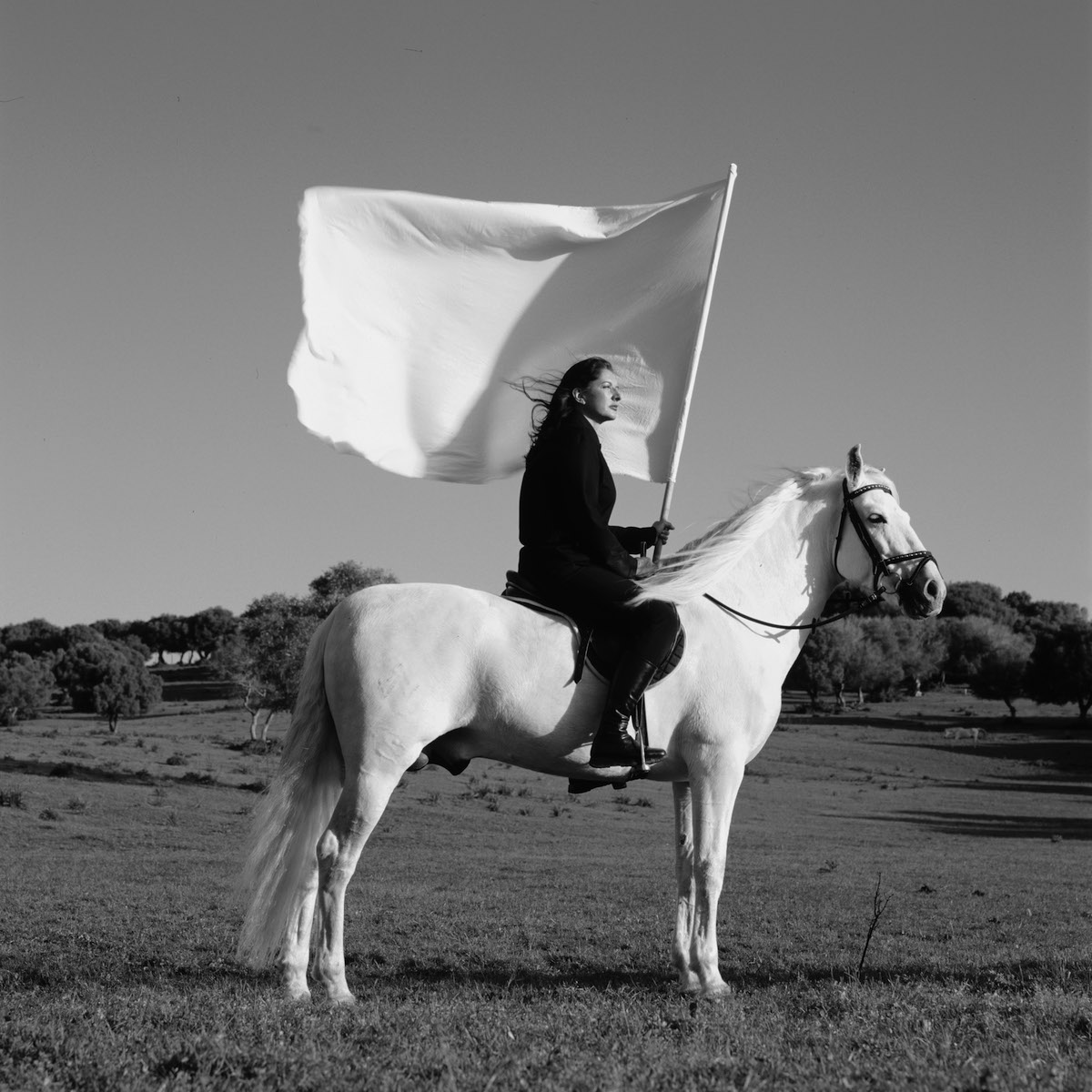 Marina Abramović, The Hero, 2001. Single-channel video (black and white, sound); 14 minutes 19 seconds. Image: courtesy of the Marina Abramović Archives © Marina Abramović
Marina Abramović, The Hero, 2001. Single-channel video (black and white, sound); 14 minutes 19 seconds. Image: courtesy of the Marina Abramović Archives © Marina Abramović
‘The audience is like a dog. They can feel immediately that you are afraid, that you are insecure, that you’re not in the right state of mind – and they just leave’
Marina Abramović
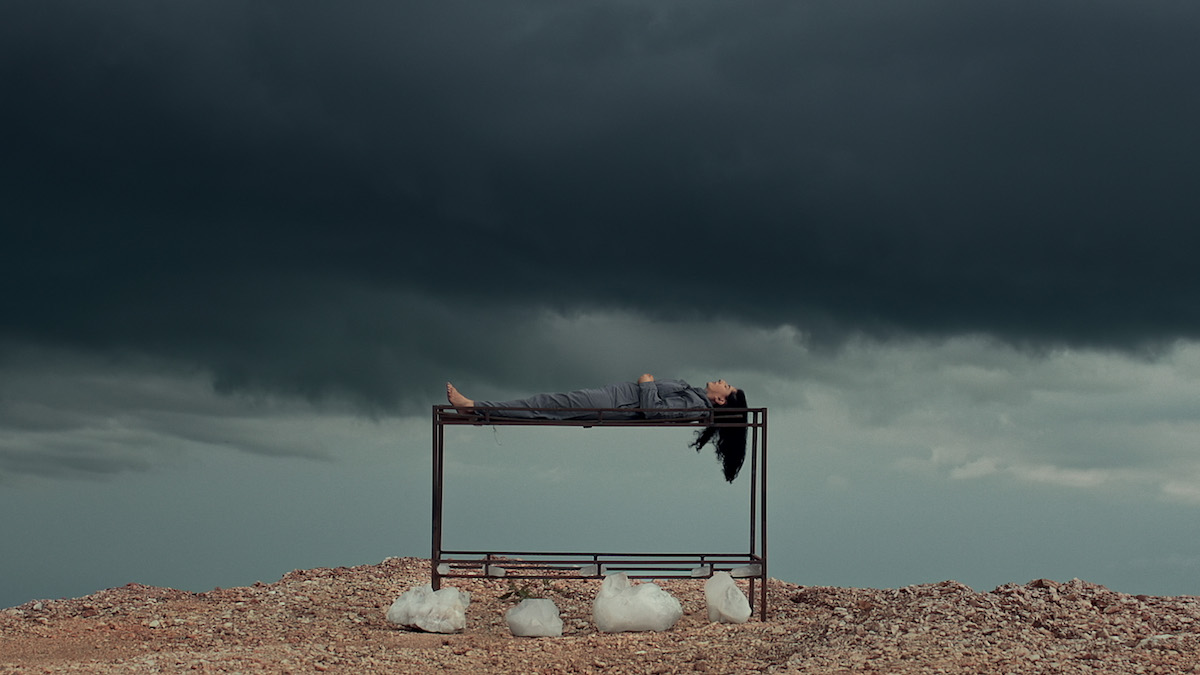 Marina Abramović, The Current, 2017. Video; 1 hour 35 minutes. Image: courtesy of the Marina Abramović Archives © Marina Abramović
Marina Abramović, The Current, 2017. Video; 1 hour 35 minutes. Image: courtesy of the Marina Abramović Archives © Marina Abramović
1. What is performance art?
Performance art is a challenging term to define.
When you consider that the medium exists as an exhibition through actions and presence, you might wonder if we are all performance artists.
In addition, audiences do not need to be in the artist’s presence to witness a piece of performance art; it’s possible to see the work through photographs or video. Performances can also happen anywhere, in a gallery or on the street. The performance artist Tehching Hsieh (born 1950), for example, has even performed in a prison. And the artist may perform the work themselves or with collaborators.
The medium emerged in Europe from the 1960s onwards. There were earlier groups that adopted performance in their work, including those of the Dada, Futurist and Surrealist movements, creating provocative performances in order to shock and present their vision of society. And there were the ‘happenings’ – a precursor to performance art – that developed in the late 1950s. These were spontaneous, often unscripted, multimedia events that blurred the boundaries between art and life.
The backdrop to these was the sociopolitical climate of the post-war period, with disenfranchised populations and a disaffected younger generation making artists question the role and relevance of art. The emerging performance art challenged the conventions of traditional forms of visual arts. The body replaced traditional materials and focused on exploring space, time and the relationship with the public. The art that now comes from this genre is some of the most daring and experimental created in the contemporary art world.
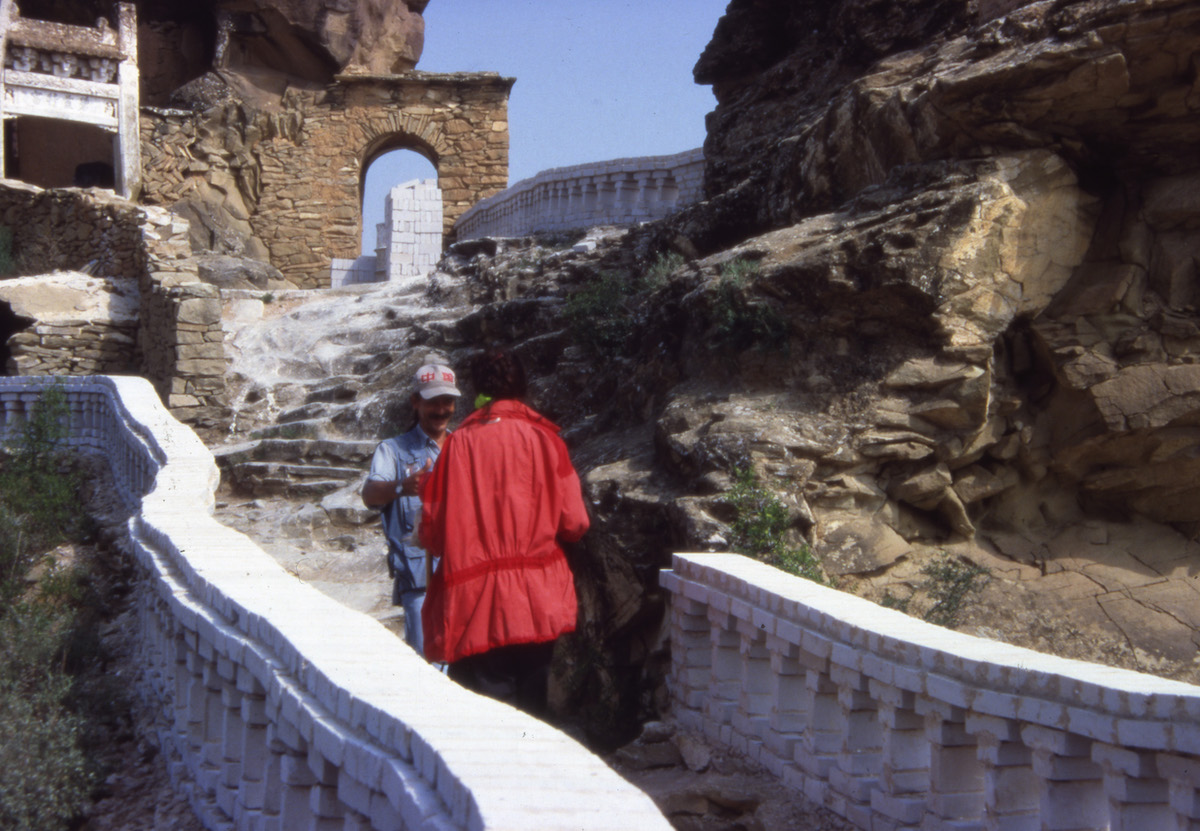 Marina Abramović/Ulay, The Lovers, Great Wall Walk, 1988; 90 days; the Great Wall of China. Image: courtesy of the Marina Abramović Archives © Marina Abramović/Ulay
Marina Abramović/Ulay, The Lovers, Great Wall Walk, 1988; 90 days; the Great Wall of China. Image: courtesy of the Marina Abramović Archives © Marina Abramović/Ulay
2. Enter Marina Abramović
Abramović’s performances are characterised by themes of fortitude and often involve extreme physical and mental endurance, lasting for hours, days, weeks or longer.
They have also been described as a critique of a childhood under a Communist regime. Born in 1946, Abramović grew up in Belgrade, Serbia, then part of post-war Yugoslavia. Her parents had close ties to the regime and she was raised in a privileged but strict, severe home. Her book, Walk Through Walls: A Memoir, starts with the line 'I come from a dark place’.
As a student Abramović was part of a generation struggling to achieve freedom under President Tito’s regime. She studied at the Academy of Fine Arts in Belgrade, but found painting limiting. She wanted to explore new methods to engage audiences. She cites Marcel Duchamp’s explorations of ‘ready-mades’ as an early influence. These were often mass-produced objects that Duchamp took in isolation and elevated to the status of art. In doing so he challenged perception of what art is, suggesting an audience’s interpretation of a work of art was more important than the materiality of the object.
In her early performances Abramović experimented in electrifying ways with physical risk, confronting her audiences with their fear of pain and the threat of danger. She was attracted to extremity as a device to embody concerns and to connect with an audience. In her early solo pieces, notably her Rhythm series, Abramović also experimented with consciousness in unsettling ways, incorporating moments of unconsciousness in order to explore how present she needed to be in her work.
In the mid-1970s she partnered with the German performance artist Ulay, forming a collective known as The Other. The two performed works over the course of 12 years that explored their physical and emotional relationship. Seen here is a still from The Lovers, Great Wall Walk, an extraordinary 90-day performance that saw both artists start from opposing ends of the Great Wall of China, walking towards each other, to meet in the middle. It was a truly testing, arduous, emotional journey. The initial concept had been that the two would marry when they met. But their relationship had moved on. As Abramović was to later say: ‘Each of us walked two and [a] half thousand kilometres to meet in the middle and depart from each other and continue working as a single artist. It was very dramatic and a very painful ending.’
Since going solo Abramović has performed pieces drawing inspiration from nature, philosophy and world religions. Much of her art involves withdrawal, similar to the asceticism found in a number of religious traditions.
It is this solitude and silence that contemporary audiences are drawn to, with its contrast to the media-saturated world we live in. A sense of empowerment gained through self-control and self-reflection is central to her work.
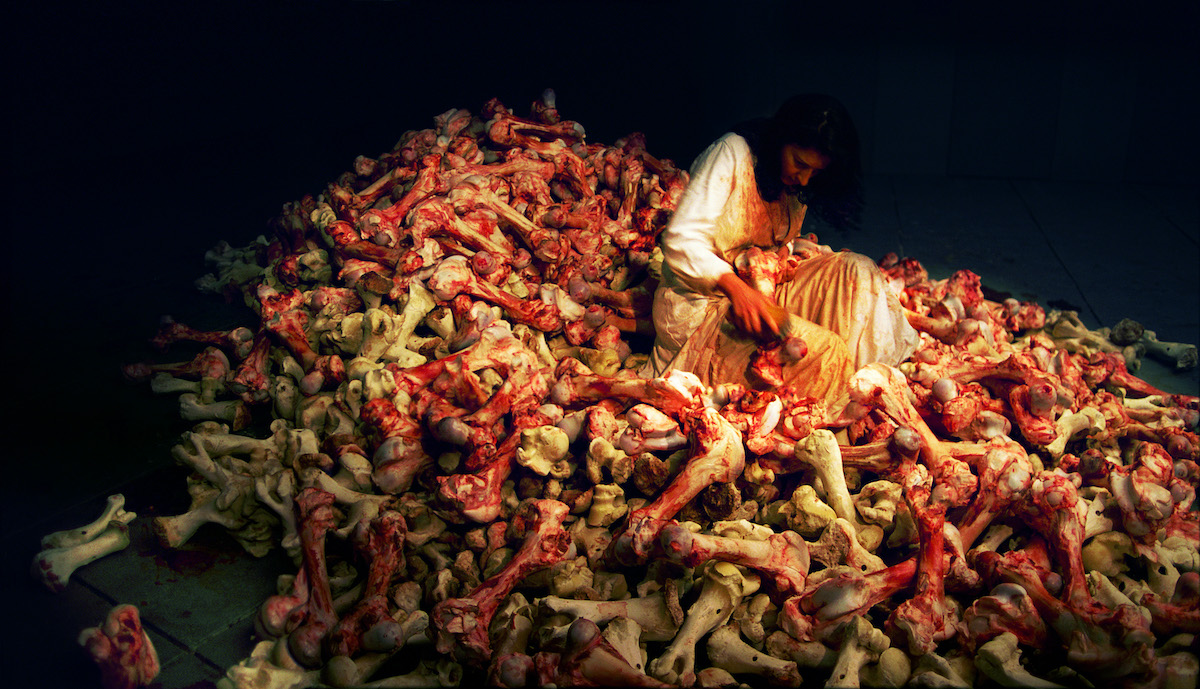 Marina Abramović, Balkan Baroque, June 1997. Performance at XLVIII Venice Biennale; 4 days. Image: courtesy of the Marina Abramović Archives © Marina Abramović
Marina Abramović, Balkan Baroque, June 1997. Performance at XLVIII Venice Biennale; 4 days. Image: courtesy of the Marina Abramović Archives © Marina Abramović
3. Key works to know
Thanks to a career that now spans over 50 years, there are so many Abramović works to choose from.
The piece that noted her as a performance artist par excellence was the shocking, unforgettable 1997 Balkan Baroque, performed at the Venice Biennale. It won her the Golden Lion, one of the most prestigious prizes in the art world. Abramović vigorously scrubbed thousands of bloody cow bones over a period of four days, seven hours a day. There were 500 clean bones at the bottom of the pile, 2,000 bloody, meaty, gristly bones at the top.
This powerful work was in reference to the ethnic cleansing that had taken place in the Bosnian War during the early 1990s.
Then there was The Artist is Present, a 736-hour and 30-minute static, silent piece, in which the artist first sat, immobile, in the atrium of MoMA in New York. Spectators were invited to take turns to sit opposite her, for as long as they wished, the two gazing into each other’s eyes, conducting a silent conversation. People queued for hours to do so. Among the famous names to attend was Lady Gaga. In one particularly affecting, unexpected moment, Ulay was the person who came to sit in the opposite chair. The pair had not spoken in years. At first stunned, then tearful, Abramović broke her own rules at that point, to touch him. The performance as a whole made her a household name.
My favourite work is Rhythm 0, performed in Naples in I974. Abramović tested the boundaries of responsibility and trust by placing her fate directly in the hands of the audience. Visitors to the gallery were permitted to do whatever they chose to her impassive body for six hours, selecting from a choice of 72 objects she had placed on a table. They ranged from bread to scissors, a thorny rose to, notably, a gun and a bullet. The performance tested how vulnerable, caring, ugly and aggressive humans can be when actions have no social consequences.
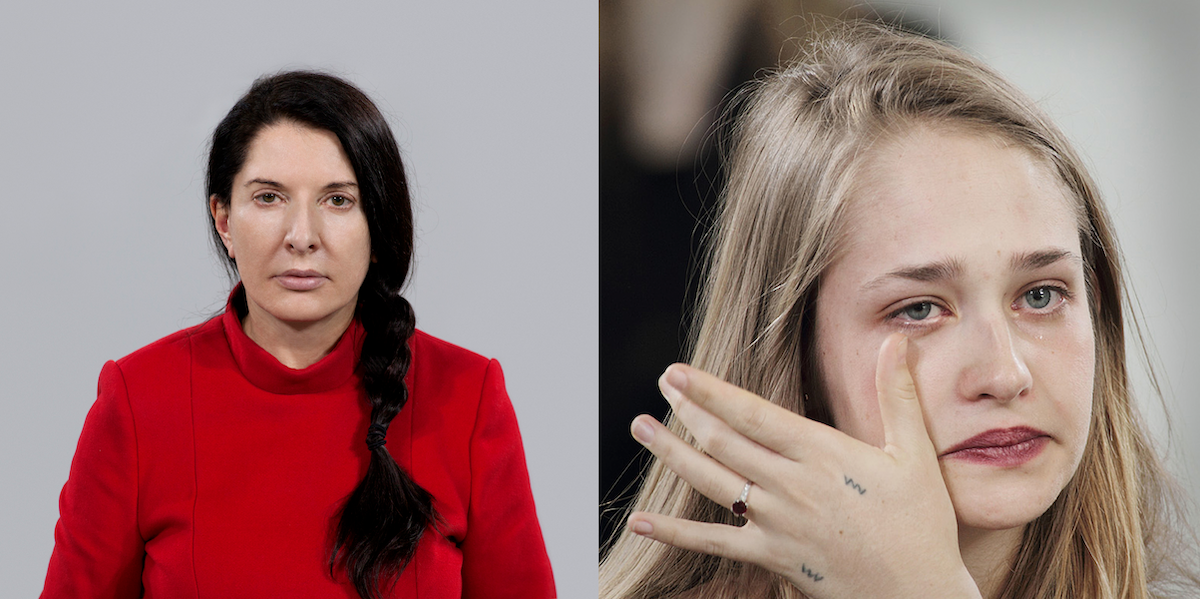 Marina Abramović, The Artist is Present, 2010. Performance; 3 months. The Museum of Modern Art, New York. Image: courtesy of the Marina Abramović Archives © Marina Abramović. Photo: Marco Anelli
Marina Abramović, The Artist is Present, 2010. Performance; 3 months. The Museum of Modern Art, New York. Image: courtesy of the Marina Abramović Archives © Marina Abramović. Photo: Marco Anelli
4. The pioneer and her audience
While Marina Abramović is now known as the ‘grandmother of performance art’, what has she brought to the medium that others before have not?
Art historians have suggested that her art is a response to different things. One is the increase of technology in our lives, which has replaced human interaction; another is our loss of connection to the natural world, which has led to environmental issues; and a third is our distractions, which result in failed connections with each other.
Abramović embraces ‘boredom’ to create time and space for something to happen. In many ways her work is similar to Taoism (and therefore Buddhism), where meditation and movement techniques are seen as medicinal.
In 2007 Abramović founded the Marina Abramović Institute (MAI), arranging ‘Cleaning the House’ workshops, where participants take part in long-durational exercises in order to reclaim a connection with nature and themselves.
The artist has also pioneered the notion of bringing the observer into her performances, often requiring their participation to complete the work. Few performance artists before had concerned themselves with their audience, but early in her career Abramović came to truly understand their power. When performing Rhythm 5 in 1974 she lay in the middle of a large flaming star (a symbol of the oppressive Communist childhood she was trying to destroy) and lost consciousness due to the lack of oxygen. Luckily a doctor in the audience intervened and extricated her.
Abramović believes experience is more important than originality, and stresses the importance of giving yourself up to situations, to be open to what is out there. Her audiences need to be receptive to new encounters to learn fresh things about themselves. Much of her work would be incomplete without an audience and would fail to have meaning.
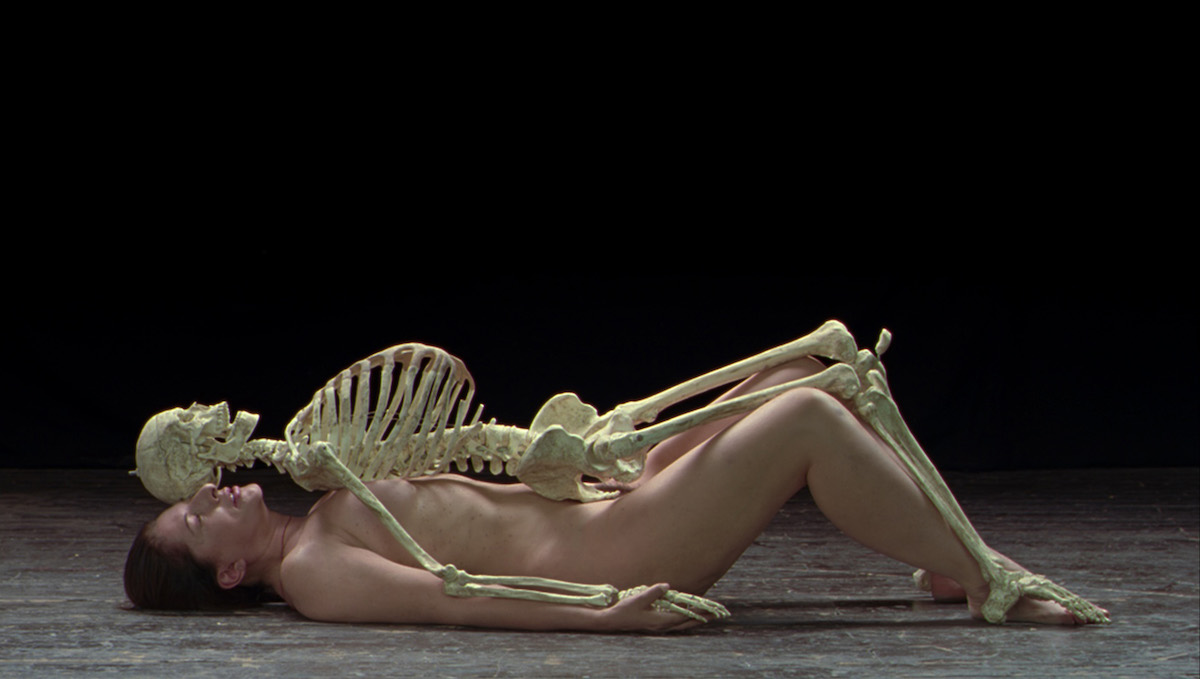 Marina Abramović, Nude with Skeleton, 2005. Performance for video; 15 minutes 46 seconds. Image: courtesy of the Marina Abramović Archives © Marina Abramović
Marina Abramović, Nude with Skeleton, 2005. Performance for video; 15 minutes 46 seconds. Image: courtesy of the Marina Abramović Archives © Marina Abramović
5. Playing a part
Performance art evokes a variety of responses. It can unsettle, but it can also inspire. Performance remains a compelling art because it contains the possibility of both the artist and observer becoming transformed during the act of the performance.
People have significant, meaningful experiences during spectatorship.
Being present in the same space as the artist and witnessing the discomfort or vulnerability of the performance can be deeply moving. The engagement fosters a unique connection with the artwork, making the observer a co-creator of the experience. This is why the ‘liveness’ of performance art is important.
Attending performances by Abramović offers the chance to witness art history in its making, and to become part of the legacy of a truly influential artist. Her work remains radical; she is brave and vulnerable in equal parts, and for many, still the most important performance artist in the world.
Great reads
Walk Through Walls: A Memoir by Marina Abramović (Penguin, 2017)
Marina Abramović by Karen Archey, Adrian Heathfield, Svetlana Racanović, Andrea Tarsia and Devin Zuber (Royal Academy of Arts, 2023)
Marina Abramović by Mary Richards (Routledge, 2018)
Performance in Contemporary Art by Catherine Wood (Tate Publishing, 2022)
Nomadic Journey and Spirit of Places by Marina Abramović (Prestel, 2023)
About the Author
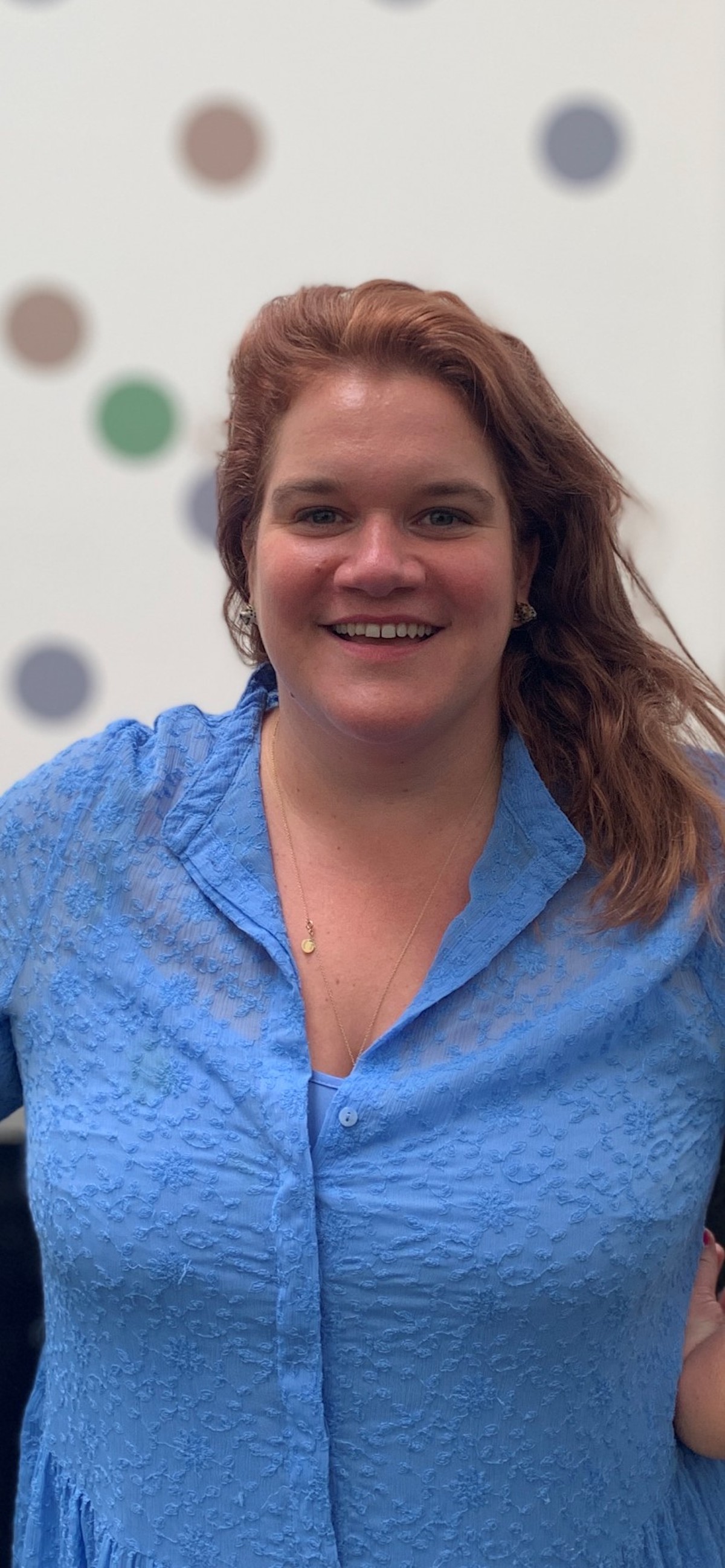
Helen Oakden
The head of the History of Art Department at St Mary’s School Ascot and an Arts Society Accredited Lecturer. She studied at Manchester University and achieved her master’s degree in architectural history from the Courtauld Institute of Art. Based in London she has previously worked for the Royal Academy and National Gallery, as well as leading specialised art history courses across Italy. She has met Marina Abramović several times during her performances in New York and London. Among her talks for The Arts Society are How Raphael became the ‘Prince of Painters’,
The Life and Art of Paula Rego, Renaissance Marriage and Mythology and Marina Abramović – the power of performance.
Article Tags
JOIN OUR MAILING LIST
Become an instant expert!
Find out more about the arts by becoming a Supporter of The Arts Society.
For just £20 a year you will receive invitations to exclusive member events and courses, special offers and concessions, our regular newsletter and our beautiful arts magazine, full of news, views, events and artist profiles.
FIND YOUR NEAREST SOCIETY
MORE FEATURES
Ever wanted to write a crime novel? As Britain’s annual crime writing festival opens, we uncover some top leads
It’s just 10 days until the Summer Olympic Games open in Paris. To mark the moment, Simon Inglis reveals how art and design play a key part in this, the world’s most spectacular multi-sport competition



